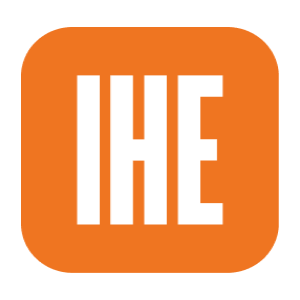The Sirens’ Call: How Attention Became the World’s Most Endangered Resource
by Chris Hayes
Published in January, 2025.
Imagine that you lead a team whose job is to generate qualified applicants for your institution’s online degree programs. Challenges abound. Post-pandemic, the supply of new online degree programs has grown faster than student demand. Inflation and job insecurity have stressed and immobilized the potential online master’s applicant population of working adults. Prospective applicants have low-cost master’s and alternative online credential options. The job of online program recruitment has never been more challenging.
Being the wayward academic you are, you believe that the answer to any question and the solution to any problem can be found in a book. You need the right book for you and your team to read and discuss, out of which a strategy will emerge to engage and inspire online program applicants. What book do you choose? (Any nominations?).
I recommend Chris Hayes’s The Sirens’ Call: How Attention Became the World’s Most Endangered Resource.
As a fan of lateral thinking, the working hypothesis that I’ve been testing over my career is that the best way to understand how to make a positive impact from within colleges and universities on our institutions is to read books that have nothing to do with colleges and universities. (Of course, I also read college- and university-focused books, which is a both/and sort of hypothesis). The effort required to apply books not about universities to universities often yields productive ideas that can be used for non-incremental organizational and institutional change efforts. Of course, it is possible to go horribly wrong with this approach, as with almost every attempted application of Christensen’s The Innovator’s Dilemma to university innovation efforts, but that is another story.
I’m recommending The Sirens’ Call, which has nothing to do with higher education or online program marketing, because this book is about attention. The reality that we live in an attention economy will come as no surprise to anyone even remotely involved in the business of persuasion. What is excellent about Hayes’s book is how he expertly unpacks how we arrived at this place of universal distraction, the impact that divided and fragmented attention has on individuals and society, and how we might extricate ourselves from this (largely self-imposed) mess.
For teams looking to find ways to move prospective students through the admissions funnel (as we say in the biz), The Sirens’ Call provides an attention-centric framework to which to structure our campaigns. As Hayes writes about his world as a cable TV news host, his competition for viewers’ attention is not only the competing news programs but every video, article, post and scrolling feed available on the screen in the smartphone slot machine that never leaves our hands.
Suppose the battle to generate prospective student interest in online programs is part of a larger war for attention. In that case, there are some steps that university marketing teams can take. First, it is essential to understand that deciding to apply to an online program—and even learning about which programs to potentially apply—is part of a much broader set of choices. Working adults thinking about upgrading their credentials and skills are thinking first about their careers. Their focus is not on universities, degrees or programs but on career progression. Getting and keeping the attention of these working adults may be easier if universities focus first on providing practical and actionable information and resources that directly address the career-related challenges and aspirations of workers.
How many online degree program university websites also contain articles, videos and data related to the careers that the master’s program is designed to prepare graduates to enter? We collect much of that data, including employment trends and projections, in the market research that underpins the decisions about which online programs to roll out. But how often do we make all that data available to prospective applicants?
As Hayes describes in The Sirens’ Call, a divided attention landscape changes the metabolism in which we all engage with information. Today, we might take weeks or months to finish a book, as we read in small chunks whenever we can find the time. Movies that once were watched in a single sitting in a theater (or on a Netflix DVD) are now viewed over days or weeks in small chunks across multiple screens.
We must keep the new pace of abundance-driven information consumption and absorption in mind as we communicate our online programs. Today’s full-time working adults thinking about applying to an online master’s degree (the population we are all competing to gain attention from) will likely research schools and programs over many months. They will secretly shop these programs first, not wanting to commit their attention to filling out expression of interest (EOI) online forms embedded on our sites, as they are not ready to receive the outbound admissions counseling calls, emails, and texts they know will be coming.
Understanding that the drawn-out decision-making process of potential online program applicants has everything to do with attention might change how we practice the art of digital marketing. A long game requires providing value at each step of the discovery, research, action and decision process. Anything that feels transactional will be a turn-off when everyone feels so much pressure to transact. Prospective students will not be persuaded to become applicants unless they believe that the online program on offer was designed to meet their needs. This new understanding may require rethinking how much information about our online programs we share pre-EOI, as working adults become ever-more reluctant to give those forms their scarce attention.
How are you thinking about online program marketing in the context of our attention economy?
What are you reading?


